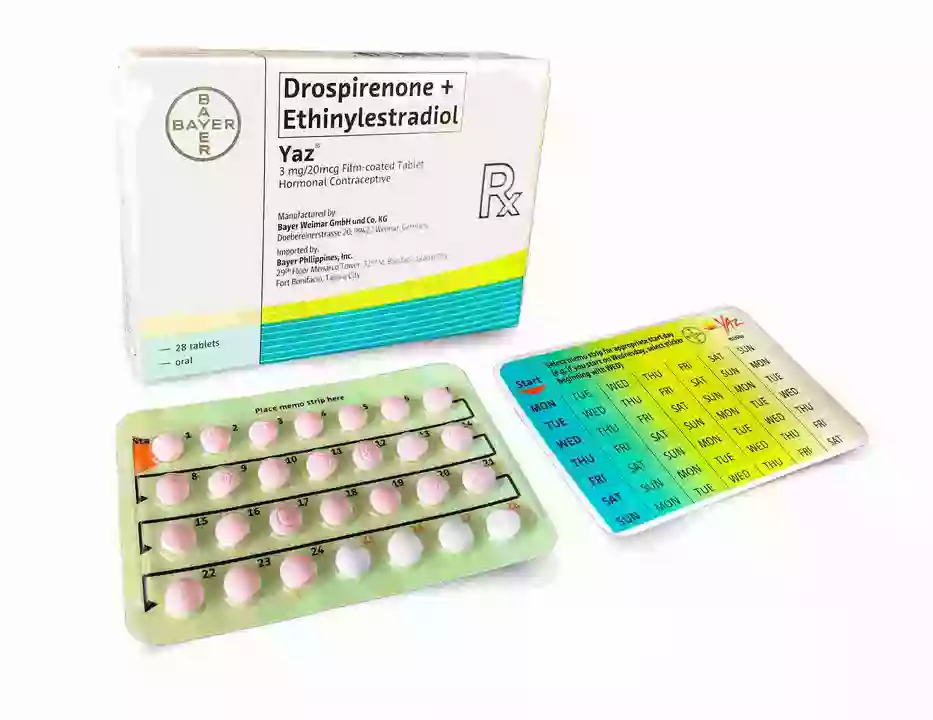How Ethinylestradiol BP Works to Prevent Pregnancy

Understanding Ethinylestradiol BP
Ethinylestradiol BP is a synthetic form of estrogen, which is one of the female sex hormones responsible for regulating the menstrual cycle and maintaining pregnancy. It is commonly used as an active ingredient in various hormonal contraceptives, including combined oral contraceptive pills. By mimicking the effects of natural estrogen, Ethinylestradiol BP works to prevent pregnancy in several ways, which we will discuss in this article.
The Role of Estrogen in the Menstrual Cycle
Before we delve into how Ethinylestradiol BP works as a contraceptive, it's essential to understand the role of estrogen in the menstrual cycle. Estrogen levels naturally fluctuate throughout the cycle, with the highest concentrations occurring during the follicular phase, when the ovarian follicles are maturing, and the endometrium (uterine lining) is thickening in preparation for a potential pregnancy.
Estrogen plays a crucial role in regulating the menstrual cycle by stimulating the release of Luteinizing Hormone (LH) and Follicle Stimulating Hormone (FSH) from the pituitary gland. These hormones are responsible for triggering ovulation, the process by which an egg is released from the ovary and becomes available for fertilization.
How Ethinylestradiol BP Prevents Ovulation
One of the primary ways in which Ethinylestradiol BP works to prevent pregnancy is by inhibiting ovulation. By providing a constant supply of synthetic estrogen, it tricks the body into thinking that it's already in the later stages of the menstrual cycle, when estrogen levels are naturally lower. This suppresses the release of LH and FSH, which in turn prevents the maturation and release of an egg from the ovary.
Without ovulation, there is no egg available for fertilization, and thus no chance of pregnancy. This is one of the most effective mechanisms of hormonal contraception, as it addresses the root cause of pregnancy by blocking the release of an egg.
Thickening of Cervical Mucus
Another way in which Ethinylestradiol BP helps to prevent pregnancy is by thickening the cervical mucus. Estrogen is responsible for increasing the production of cervical mucus during the menstrual cycle, and it also affects its consistency. When taking a contraceptive containing Ethinylestradiol BP, the cervical mucus becomes thicker and more viscous, creating a barrier that is difficult for sperm to penetrate.
This makes it harder for sperm to reach the egg, even if ovulation were to occur. By reducing the chances of sperm meeting an egg, Ethinylestradiol BP further decreases the likelihood of pregnancy.
Altering the Endometrial Lining
Ethinylestradiol BP also plays a role in altering the endometrial lining of the uterus. Estrogen is responsible for thickening the endometrium during the menstrual cycle, in preparation for a potential pregnancy. However, when taking a contraceptive containing Ethinylestradiol BP, the endometrium does not thicken as much as it would under the influence of natural estrogen.
This means that even if an egg were to be fertilized, it would have a harder time implanting itself in the endometrium and developing into a pregnancy. By making the uterine lining less receptive to a fertilized egg, Ethinylestradiol BP adds another layer of protection against pregnancy.
Efficacy and Side Effects of Ethinylestradiol BP
Contraceptives containing Ethinylestradiol BP are highly effective at preventing pregnancy when used correctly. The failure rate is typically less than 1% with perfect use, meaning that fewer than one in 100 women will become pregnant over the course of a year. However, it's important to note that the effectiveness of these contraceptives can be reduced if pills are missed or taken irregularly.
As with any medication, there are potential side effects associated with using contraceptives containing Ethinylestradiol BP. Some common side effects include nausea, breast tenderness, headaches, and mood changes. Most side effects are mild and tend to diminish over time as the body adjusts to the medication. However, if side effects persist or become severe, it's important to consult with a healthcare provider to discuss alternative contraceptive options.
Conclusion
Ethinylestradiol BP is an effective contraceptive that works by preventing ovulation, thickening cervical mucus, and altering the endometrial lining. By understanding how this synthetic estrogen impacts the menstrual cycle and reproductive system, we can appreciate its role in preventing pregnancy. If you're considering using a contraceptive containing Ethinylestradiol BP, it's crucial to discuss your options with a healthcare provider to ensure you're choosing the best method for your individual needs.






Comments
Vandermolen Willis
May 6, 2023 AT 23:32Cool rundown 👍
Mary Keenan
May 25, 2023 AT 11:58Honestly, this article just regurgitates the same textbook stuff without any real insight, seems like a lazy copy‑paste job. It reads like someone skimmed a pharmacology textbook and decided to slap it together. The tone is bland and the facts are presented without any practical context.
Steven Young
June 13, 2023 AT 00:25They say estrogen tricks the brain but the real agenda is hidden in pharma profit motives the pills are just a way to keep women dependent on the medical industry
Kelly Brammer
July 1, 2023 AT 12:52While the science is solid, it’s worth noting that many women experience uncomfortable side effects that are often downplayed. Nausea, breast tenderness, and mood swings can be more than a minor inconvenience. Ethical prescribing means discussing these risks honestly, not just the perfect‑use failure rate.
Ben Collins
July 20, 2023 AT 01:18Oh sure, because the only thing that matters is a perfect side‑effect checklist. 🙄 Real life isn’t a lab, people actually have feelings about how pills make them feel.
Denver Bright
August 7, 2023 AT 13:45Honestly, I think it’s pretty weird that we keep talking about synthetic hormones like they’re some mysterious villain. They’re just chemicals we’ve engineered to do a job. If you’re missing a pill, that’s on you, not the molecule.
Kelli Benedik
August 26, 2023 AT 02:12Wow, this article really hit all the notes like a dramatic symphony! 🎭 First, the way it explains how synthetic estrogen mimics the natural hormone is crystal clear, making even a non‑science major feel informed. Then, the breakdown of the three main mechanisms-ovulation inhibition, mucus thickening, and endometrial alteration-reads like a thriller plot twist that keeps you on edge. I love how the piece doesn’t shy away from the side‑effects; it mentions nausea, breast tenderness, and mood changes with a gentle honesty that respects the reader’s experience. The tone stays friendly, never slipping into preachy medical jargon, which is a breath of fresh air on an otherwise sterile topic. It even throws in a reminder about perfect‑use versus typical‑use failure rates, reminding us that consistency is key. The conclusion ties everything together nicely, urging anyone considering this pill to talk with a healthcare provider-smart advice that feels supportive rather than pushy. Overall, the article is thorough, balanced, and engaging, turning a potentially dry subject into something you actually want to read. 💡
cariletta jones
September 13, 2023 AT 14:38Great summary! It’s nice to see the science wrapped up in such an accessible way.
Kevin Hylant
October 2, 2023 AT 03:05The pill works best when taken every day at the same time. Missing doses can lower its effectiveness quickly.
Holly Green
October 20, 2023 AT 15:32Exactly, consistency is key and a quick chat with a doctor can clear up any doubts.